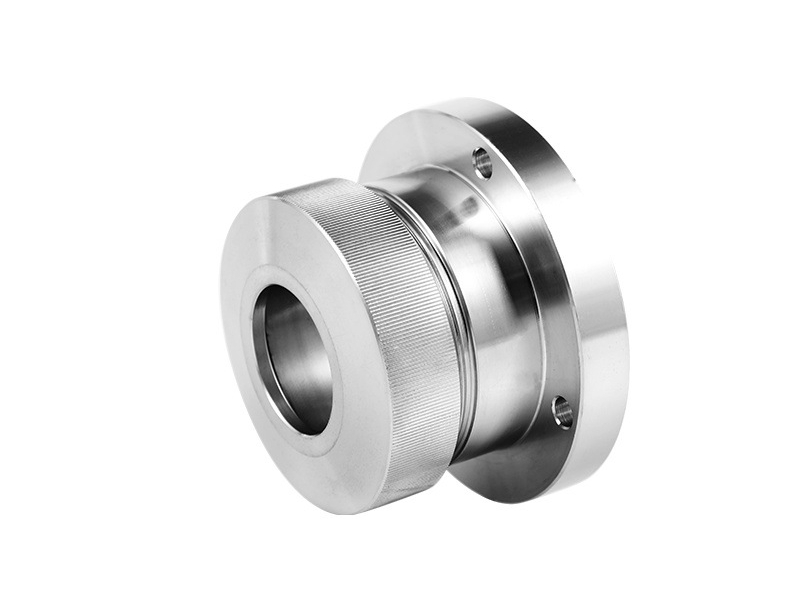Stainless Steel CNC Machining for Corrosion-Resistant Oil and Gas Parts
Introduction to Stainless Steel CNC Machining for Oil and Gas
The oil and gas industry demands components that can withstand harsh environments, including extreme pressures, high temperatures, and exposure to corrosive substances. Stainless steel CNC machining offers the ideal solution for producing corrosion-resistant parts that maintain structural integrity under these challenging conditions. Stainless steel's exceptional resistance to corrosion, strength, and durability makes it perfect for critical components like valve bodies, pump components, and pipe fittings used in oil and gas exploration and production.
Precision CNC machining allows for creating high-quality stainless steel parts with tight tolerances and superior finishes. By utilizing advanced machining technologies like multi-axis CNC and precision milling, manufacturers can produce components that meet the stringent requirements of the oil and gas industry, ensuring operational reliability and safety.
Material Performance Comparison for Stainless Steel Parts in Oil and Gas
Material | Tensile Strength (MPa) | Thermal Conductivity (W/m·K) | Machinability | Corrosion Resistance | Typical Applications | Advantages |
|---|---|---|---|---|---|---|
515 | 16.2 | Good | Superior (>1000 hrs ASTM B117) | Valve bodies, fittings | Excellent corrosion resistance, weldability | |
580 | 16.2 | Good | Superior (>1000 hrs ASTM B117) | Pump components, pipelines | Exceptional corrosion resistance, high strength | |
900 | 13.5 | Fair | Good (>800 hrs ASTM B117) | Valve seats, sealing rings | High hardness, wear resistance | |
620 | 15 | Fair | Excellent (>1500 hrs ASTM B117) | Corrosion-resistant fasteners, flanges | High strength, excellent corrosion resistance |
Material Selection Strategy for Stainless Steel Parts in Oil and Gas Applications
Stainless Steel SUS304 provides excellent corrosion resistance and is widely used for producing parts like valve bodies and fittings in less aggressive environments. With a tensile strength of 515 MPa, SUS304 offers good machinability and is an affordable choice for many oil and gas applications.
Stainless Steel SUS316 offers superior corrosion resistance, making it the preferred material for pump components, pipelines, and other parts exposed to harsh chemicals and saltwater. Its tensile strength of 580 MPa ensures long-lasting performance even in the most corrosive environments.
Stainless Steel SUS440C is a high-hardness steel (900 MPa tensile strength) ideal for applications requiring wear resistance, such as valve seats and sealing rings. Although it has fair corrosion resistance, its hardness and wear properties make it suitable for high-stress applications in the oil and gas industry.
Stainless Steel SUS2205 is a duplex stainless steel with high strength (620 MPa) and excellent corrosion resistance. It is ideal for applications involving fasteners, flanges, and other components exposed to harsh environments, offering both strength and durability.
CNC Machining Processes for Stainless Steel Parts in Oil and Gas Applications
CNC Machining Process | Dimensional Accuracy (mm) | Surface Roughness (Ra μm) | Typical Applications | Key Advantages |
|---|---|---|---|---|
±0.005 | 0.2-0.8 | Complex parts, valve bodies, pump components | High precision, complex geometries | |
±0.005-0.01 | 0.4-1.2 | Cylindrical components, pipe fittings | Excellent rotational accuracy | |
±0.01-0.02 | 0.8-1.6 | Precision mounting holes, pipe joints | Accurate hole placement | |
±0.002-0.005 | 0.1-0.4 | High-finish surface components, sealing surfaces | Superior surface smoothness |
CNC Process Selection Strategy for Stainless Steel Parts
5-Axis CNC Milling is ideal for producing complex, high-precision stainless steel parts such as valve bodies and pump components. With the ability to create intricate geometries with tight tolerances (±0.005 mm), it is perfect for components that require high accuracy and durability.
Precision CNC Turning ensures that cylindrical components, such as pipe fittings and connectors, are produced with excellent symmetry and accuracy (±0.005 mm). This method is ideal for producing parts with rotational features.
CNC Drilling guarantees precise hole placement (±0.01 mm), which is essential for components like pipe joints and mounting holes in stainless steel parts, ensuring proper alignment and secure assembly.
CNC Grinding provides exceptionally fine surface finishes (Ra ≤0.4 µm), ideal for high-precision sealing surfaces and other components that require smooth surfaces for proper function and sealing in oil and gas systems.
Surface Treatment Performance for Stainless Steel Parts in Oil and Gas Applications
Treatment Method | Surface Roughness (Ra μm) | Corrosion Resistance | Hardness (HV) | Applications |
|---|---|---|---|---|
0.2-0.8 | Excellent (>1000 hrs ASTM B117) | N/A | Stainless steel fittings, valve bodies | |
0.1-0.4 | Superior (>1000 hrs ASTM B117) | N/A | Stainless steel pumps, valves | |
0.3-0.6 | Excellent (>800 hrs ASTM B117) | 1000-1200 | High-performance stainless steel parts | |
0.2-0.6 | Superior (>1000 hrs ASTM B117) | 800-1000 | Wear-resistant components, sealing rings |
Typical Prototyping Methods
CNC Machining Prototyping: Precision prototypes (±0.005 mm) for functional testing of stainless steel components in oil and gas applications.
Rapid Molding Prototyping: Fast and accurate prototyping for stainless steel components, ideal for quick evaluation of designs.
3D Printing Prototyping: Cost-effective and quick prototyping (±0.1 mm accuracy) for initial design concepts of stainless steel parts.
Quality Inspection Procedures
CMM Inspection (ISO 10360-2): Dimensional accuracy verification of stainless steel parts with tight tolerances.
Surface Roughness Test (ISO 4287): Ensures the surface quality of CNC machined stainless steel parts.
Salt Spray Test (ASTM B117): Verifies corrosion resistance performance of stainless steel parts.
Visual Inspection (ISO 2859-1, AQL 1.0): Confirms stainless steel components' aesthetic and functional quality.
ISO 9001:2015 Documentation: Ensures traceability, consistency, and compliance with industry standards.
Industry Applications
Oil and Gas: Corrosion-resistant fittings, valve bodies, pipeline components, and pump parts.
Aerospace: Aircraft engine components, structural parts, fasteners.
Automotive: Exhaust systems, engine components, fuel system parts.
FAQs:
Why is stainless steel preferred for oil and gas equipment?
What are the key benefits of stainless steel CNC machining for corrosion-resistant parts?
How does CNC machining improve the precision of stainless steel parts?
What surface treatments enhance the durability of stainless steel in oil and gas environments?
What are the best prototyping methods for stainless steel parts used in the oil and gas industry?

